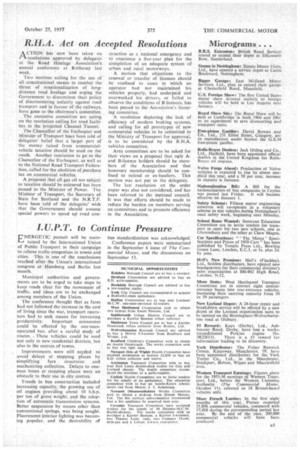I.U.P.T. to Continue Pressure
Page 37

If you've noticed an error in this article please click here to report it so we can fix it.
pNERGETIC pursuit will be main
tained by the International Union of Public Transport in their campaign to relieve traffic congestion in towns and cities. This is one of the conclusions reached after the Union's international congress at Hamburg and Berlin last month.
Municipal authorities and governments are to be urged to take steps to keep roads clear for the movement of traffic, and ideas are to be exchanged among members of the Union.
The conference thought that as fares had not followed the increase in the cost of living since the war, transport operators had to seek means for increasing productivity. Important economies could be effected by the one-manoperated bus, after a careful study of routes. , These vehicles could be used not only in new residential districts, but also in the centres of towns.
Improvements were still need to avoid delays at stopping places by simplifying fare structures and mechanizing collection. Delays to oneman buses at stopping places were an obstacle to their use in city centres.
Trends in bus construction included increasing capacity, the growing use of oil engines providing about 10 b.h.p. per ton of gross weight, and the adoption of automatic transmission systems. Better suspension by means other than conventional springs, was being sought. Fluorescent interior lighting was becoming popular, and the desirability of bus standardization was acknowledged.
Conference papers were summarized in the September 6 issue of The Commercial Motor, and the discussions on September 13.




































































































